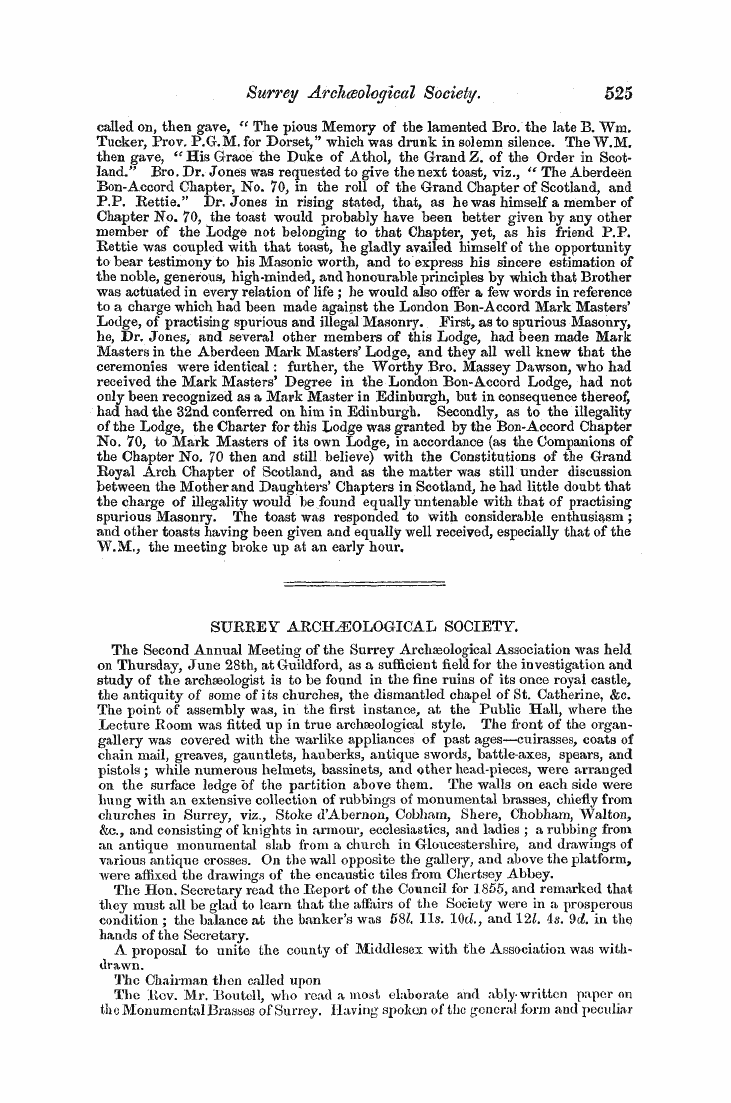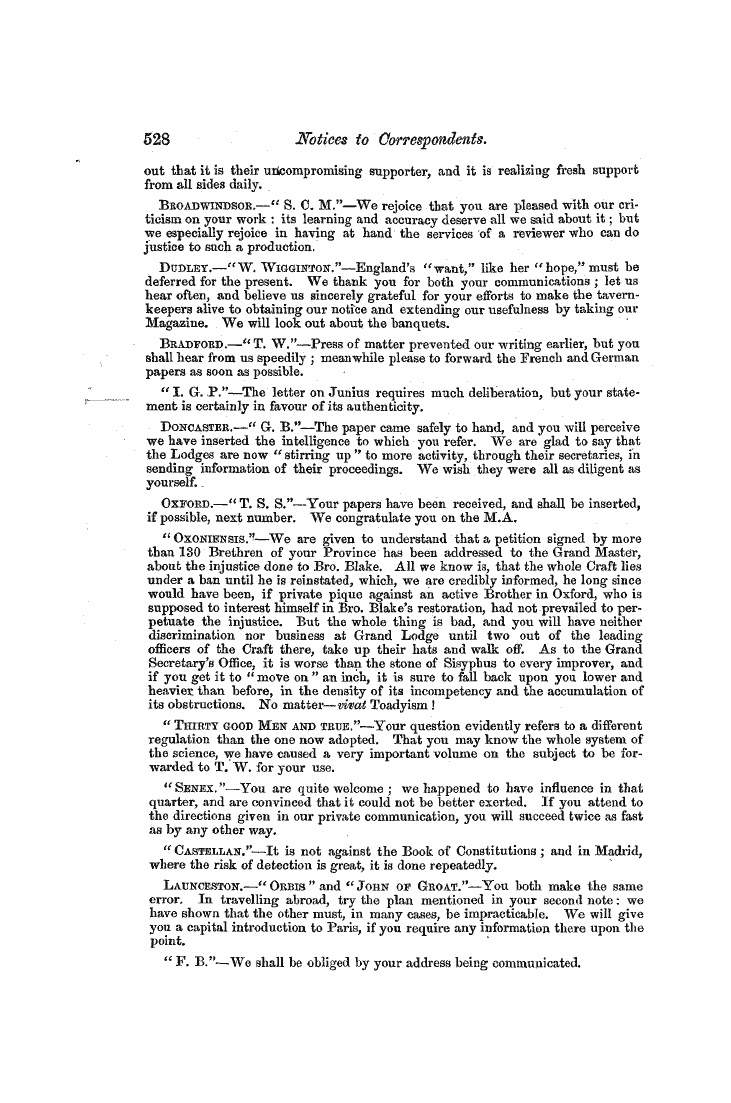-
Articles/Ads
Article Untitled Article ← Page 2 of 7 →
Note: This text has been automatically extracted via Optical Character Recognition (OCR) software.
Untitled Article
Instead of attempting to get any nearer the solution of the question , let imagination east her eye a few ages back , and gaze at the surface of this busy world , when as yet it had no life , when the thousand hills had no cattle to graze on their brow , the rivers had no flowers to deck their cheerless banks , the blue sky no melody from " charm of
earliest birds ¦; " the " breath of morn " no sweetness , the earth no fragrance , —one dull , dead , drear waste , without tree or flower , or blade of grass , to relieve the weary desolation . Such it once was . Now look at it , as it is ; a scene of indescribable interest and beauty . The living principle has inspired the dust and the clay ; and a
thousand beauteous forms have sprung into life and joy , activity and usefulness . The earth , the air , the sea , the mountains , the hills , the valleys— -all teem with life , and give us at least some idea of what life is worth . This priceless boon , then , in some of its more interesting phenomena , shall be our study .
It is evident that every atom of matter on the face of the earth and in the depths of the sea is either living or dead—either endowed with life , vegetable or animal , or destitute of it . Now what are the characteristics of living matter as distinguished from dead ? This is the first question , and it seems a very simple and easy one , but it is not so , as we shall have occasion to show in
the sequel . Even the properties of dead matter are but imperfectly understood . We were taught in our boyish days , that one of the properties of matter is its infinite divisibility ; and this was illustrated very prettily by stories about the wonderful malleability of gold , the possible extent of dilution by water , and the wide diffusibility of the fragrance of musk or other odours , through the air .
All this seemed to support the doctrine that matter was capable of indefinite ( which our tutors , simple souls ! called infinite ) subdivision . But , in these latter days , chemistry has stolen a sly march on mechanical philosophy , and shown , by her atomic theory , that all matter is composed of separate atoms—very small , no doubt , but still incapable of subdivision , even by the scarcely less than omnipotent force of chemical attraction , and of course indivisible by any mechanical
force . Matter , therefore , is neither susceptible of infinite , nor even of indefinite divisibility , for it is as clearly composed of atoms as a bag of shot consists of a number of individual balls of lead . Each atom unites with other atoms in a definite and ascertainable proportion ; and analyse as you will , you can only sort and re-sort these atoms . Not one of them can you halve , or quarter , or divide in any way . There they are , externally and unchangeably the same . Since the creation of the world not one additional atom has been created , nor one
existing atom divided or destroyed . Each atom may have been solid , fluid , or aeriform in turn ; it may have entered a blade of grass , or the body of an elephant or a whale ; it may have composed part of the vast ocean , or helped to form a drop of human blood , or the down of a butterfly ' s wing ; it may have been alive and dead , and alive again , a thousand times ; but it is the same unchanged atom , undivided and entire . It was created subject to mechanical , electrical ,
Note: This text has been automatically extracted via Optical Character Recognition (OCR) software.
Untitled Article
Instead of attempting to get any nearer the solution of the question , let imagination east her eye a few ages back , and gaze at the surface of this busy world , when as yet it had no life , when the thousand hills had no cattle to graze on their brow , the rivers had no flowers to deck their cheerless banks , the blue sky no melody from " charm of
earliest birds ¦; " the " breath of morn " no sweetness , the earth no fragrance , —one dull , dead , drear waste , without tree or flower , or blade of grass , to relieve the weary desolation . Such it once was . Now look at it , as it is ; a scene of indescribable interest and beauty . The living principle has inspired the dust and the clay ; and a
thousand beauteous forms have sprung into life and joy , activity and usefulness . The earth , the air , the sea , the mountains , the hills , the valleys— -all teem with life , and give us at least some idea of what life is worth . This priceless boon , then , in some of its more interesting phenomena , shall be our study .
It is evident that every atom of matter on the face of the earth and in the depths of the sea is either living or dead—either endowed with life , vegetable or animal , or destitute of it . Now what are the characteristics of living matter as distinguished from dead ? This is the first question , and it seems a very simple and easy one , but it is not so , as we shall have occasion to show in
the sequel . Even the properties of dead matter are but imperfectly understood . We were taught in our boyish days , that one of the properties of matter is its infinite divisibility ; and this was illustrated very prettily by stories about the wonderful malleability of gold , the possible extent of dilution by water , and the wide diffusibility of the fragrance of musk or other odours , through the air .
All this seemed to support the doctrine that matter was capable of indefinite ( which our tutors , simple souls ! called infinite ) subdivision . But , in these latter days , chemistry has stolen a sly march on mechanical philosophy , and shown , by her atomic theory , that all matter is composed of separate atoms—very small , no doubt , but still incapable of subdivision , even by the scarcely less than omnipotent force of chemical attraction , and of course indivisible by any mechanical
force . Matter , therefore , is neither susceptible of infinite , nor even of indefinite divisibility , for it is as clearly composed of atoms as a bag of shot consists of a number of individual balls of lead . Each atom unites with other atoms in a definite and ascertainable proportion ; and analyse as you will , you can only sort and re-sort these atoms . Not one of them can you halve , or quarter , or divide in any way . There they are , externally and unchangeably the same . Since the creation of the world not one additional atom has been created , nor one
existing atom divided or destroyed . Each atom may have been solid , fluid , or aeriform in turn ; it may have entered a blade of grass , or the body of an elephant or a whale ; it may have composed part of the vast ocean , or helped to form a drop of human blood , or the down of a butterfly ' s wing ; it may have been alive and dead , and alive again , a thousand times ; but it is the same unchanged atom , undivided and entire . It was created subject to mechanical , electrical ,































































